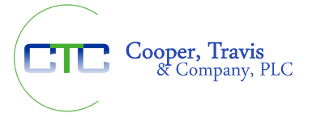Short Answer: Yes. But Be Very, Very, Carefully Can AI be a helpful resource tool for audit and accounting research? Of course, it can. But the real question is this: can you rely on the response — can it be trusted to give you a correct, non-misleading answer? Will it be complete? Will it pick up on the nuances that often cling to such research? Would you take it to your supervisor or your client or to court? This article will generally focus on generative AI tools that leverage large-language models, such as ChatGPT and Perplexity. This article is not
Read More »It’s No Small Thing Materiality is a cornerstone in accounting and financial reporting, particularly under Generally Accepted Accounting Principles (GAAP). It is the polar star for determining what information is significant enough to influence the decisions of financial statement users. While materiality may seem straightforward, its application is nuanced and requires professional judgment. This blog will explore what materiality means under GAAP, how it impacts financial reporting, and why it’s critical for businesses and stakeholders. What Is Materiality? Materiality refers to the impact of information on the decision-making process of financial statement users. According to GAAP, information is considered material
Read More »The Invisible Load Every Contractor Carries In the construction industry, managing costs effectively is critical to profitability, compliance, and financial and tax reporting. Correctly identifying and allocating indirect contract costs is essential to this cost management. This blog will explore indirect contract costs, provide examples, explain their importance, discuss the benefits of proper allocation and risks of improper allocation, and outline some of the acceptable allocation methods under U.S. GAAP. What Are Indirect Contract Costs? Indirect contract costs are expenses that cannot be directly traced to a specific construction project but are necessary for overall project execution. Unlike direct costs—such
Read More »In Lite of the Election Results President-Elect Trump has increasingly touted new tax cuts for individual constituencies. Trump first proposed exempting tips from income tax, then discussed exempting Social Security payments from income. The focus on individual relief over corporate and business interests may reflect changes in voter sentiment. The consensus seems to be that Trump, and the Republicans will extend the TCJA as currently written, which the Congressional Budget Office estimates will add $4.6 trillion in debt over the 10-year budget window. That figure doesn’t include the cost of expensive new Trump tax proposals, such as lowering the corporate
Read More »It’s a Long Road That Never Turns Continuing Professional Education (CPE) for Certified Public Accountants (CPAs) is crucial to maintaining professional competence and staying current and compliant in the rapidly evolving accounting field. CPE is not just a requirement but a vital tool for professional growth and development. It can give you a deeper understanding. It can give you a broader perspective. It can also give you a much-needed break from actual (but paying) number crunching. However, the system can also be somewhat complex due to the various rules and requirements of the many reporting jurisdictions. And because of this
Read More »

